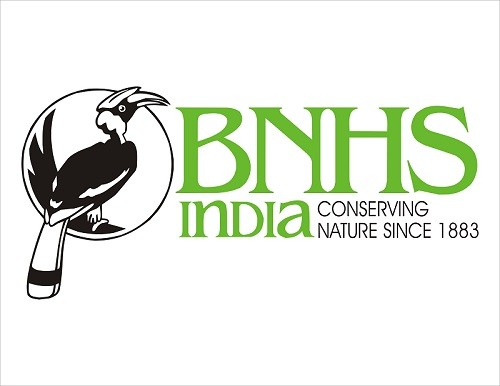BNHS joins GLOBAL NATURAL HISTORY INITIATIVE BUILDS
March 23, 2023 – Mumbai – The BNHS has recently worked with a coalition of global natural history museums to create a central catalogue of these institutions’ collections. Natural history museums hold scientific collections that are uniquely positioned to respond to today’s interlocking crises. Collections preserve baseline knowledge of past worlds that allow humanity to forecast, and prepare for, future conditions. A group of natural history museums, organized by the Smithsonian National Museum of Natural History in Washington DC, the American Museum of Natural History Museum in New York City, and the Natural History Museum in London, has mapped the total collections from 73 of the world’s largest natural history museums in 28 countries. This is the first step of an ambitious effort to inventory global holdings that can help scientists and decisionmakers find solutions to urgent, wide-ranging issues such as climate change, food insecurity, human health, pandemic preparedness, and wildlife conservation.
Beyond the walls of their public galleries, the world’s natural history museums serve as the guardians of an unprecedented archive of the history of our planet and solar system. These natural history collections provide a unique window into the planet’s past, and they are increasingly being used to make actionable forecasts to chart our future. Museums have traditionally acted as independent organizations, but this new approach imagines a global collection composed of all the collections of all the world’s museums.
To better understand this immense, untapped resource, lead scientists from a dozen large natural history museums created an innovative but simple framework to rapidly evaluate the size and composition of natural history museum collections globally. The findings were published today in Science magazine in the paper, “A Global Approach for Natural History Museum Collections.” The Science paper can be found online at the Science at
https://www.science.org/doi/10.1126/science.adf6434
The survey organizers created a methodology that could rapidly survey collection holdings across museums by creating a common vocabulary of 19 collection types spanning the entirety of biological, geological, paleontological, and anthropological collections and 16 terrestrial and marine regions that cover the entirety of the Earth.
"We wanted to find a fast way to estimate the size and composition of the global collection so that we could begin to build a collective strategy for the future," said lead author Kirk Johnson, Sant Director of the Smithsonian National Museum of Natural History. Johnson co-led the effort along with Ian F. P. Owens (formerly at the Natural History Museum in London and now the Executive Director of the Cornell Laboratory of Ornithology) in collaboration with more than 150 museum directors and scientists representing 73 natural history museums and herbaria.
The survey confirmed an aggregate collection of more than 1.1 billion objects, managed by more than 4,500 science staff and nearly 4,000 volunteers. While the aggregate collection is vast, the survey showed that there are conspicuous gaps across museum collections in areas including tropic and polar regions, marine systems, and undiscovered arthropod and microbial diversity. These gaps could provide a roadmap for coordinated collecting efforts going forward.
The report is a significant summary, but it is only the first step in surveying the global collection and tapping its enormous potential. Natural history collections are uniquely positioned to inform responses to today’s interlocking crises, but due to lack of funding and coordination, the information embedded in museum collections remains largely inaccessible. With strategic coordination, a global collection has the potential to guide decisions that will shape the future of humanity and biodiversity.
By creating this framework and survey, project organizers aim to create a foundation for the global museum network to work together to support future global sustainability, biodiversity, and climate frameworks using knowledge gained from museum collections. This will enable all museums to be more strategic as they plan their collection efforts in the future.
The authors also recognize that the historic concentration of large museums in North America and Europe can be a barrier to knowledge-sharing and perpetuates power imbalances rooted in the colonial history of museum science. In the future, it is crucial that the global collection also reflect and support museums elsewhere in the world.
"The importance of natural history museum collections cannot be overstated," said Rahul Khot Co-author of the paper and deputy director of BNHS. "These collections are essential for understanding our planet's biodiversity and for developing solutions to the current environmental crisis. It is crucial that we take a global approach to preserving these collections for future generations." “The publication of this paper in Science is a testament to its importance and impact in the scientific community. It is expected to be widely cited and used as a guide for the future management and use of natural history museum collections” said Khot.
The paper considers applications of collection-based research, focusing on case studies that explore how museum natural history collections can be used to study pandemic preparedness, global change, biodiversity, invasive species, colonial heritage, and museomics (study of DNA from museum specimens). Case study examples of each of the above applications are available here: https://bit.ly/3Ts2ZSm
As the authors write, “The long-term security and value of natural history collections depends on developing global and local partnerships that demonstrate not only their relevance for specific scientific, societal, and conservation challenges, but also for the benefits that apply to every person on the planet.”
The full Global Collections dashboard is available here: https://rebrand.ly/global-collections.
Images that address some of the issues raised in the paper can be found here: https://bit.ly/3Ts2ZSm
The full list of participating institutions and authors can be found here: https://bit.ly/3Ts2ZSm
About the BNHS Collections, Mumbai
The specimen collection at BNHS is an invaluable repository of faunal biodiversity of the Indian subcontinent and beyond. This prestigious collection is one of the best from the Oriental region and is the result of the extensive scientific studies, surveys and documentation drives that were undertaken in different regions of the subcontinent and neighboring areas.
As the collections were mainly made during pre-independence days, these include specimens from the oriental region, mainly the present day India, Pakistan, Afghanistan, Bangladesh, Nepal, Bhutan, Myanmar and Sri Lanka. This is indeed a very important collection of the faunal diversity of India and one of the first major collections from the oriental region in Asia. These meticulous efforts over a long period of time resulted into a dynamic collection of the specimens of 20,000 mammals, 29,000 birds, 5,430 bird eggs, 15,000 amphibians and reptiles, more than 70,000 insects and 10,000 other invertibrates. Thus the 139 year-old specimen collection of BNHS is a unique index of biodiversity of the Indian subcontinent and an invaluable database of Indian mammals, birds, reptiles, amphibians and insects. Simply put, the BNHS collection is priceless. It is impossible to evaluate the actual value of the collection, which is the store house of the genetic information of more than a century of the Indian subcontinent.
In many BNHS publications such as Book of Indian Animals, Book of Indian Birds, Book of Indian Reptiles and Amphibians and Butterflies of Sikkim Himalayas, the collections were a source of information and illustrations. Specimens even as old as 100 years are in good condition and are easy to handle due to the tireless efforts of the Collection team. The collections serve as the primary stepping stone for many an amateur and professional in their study of the faunal wealth of Indian sub-continent.
______________________________________________________________________________Contact
Rahul Khot, Deputy Director BNHS
Email r.khot@bnhs.org

